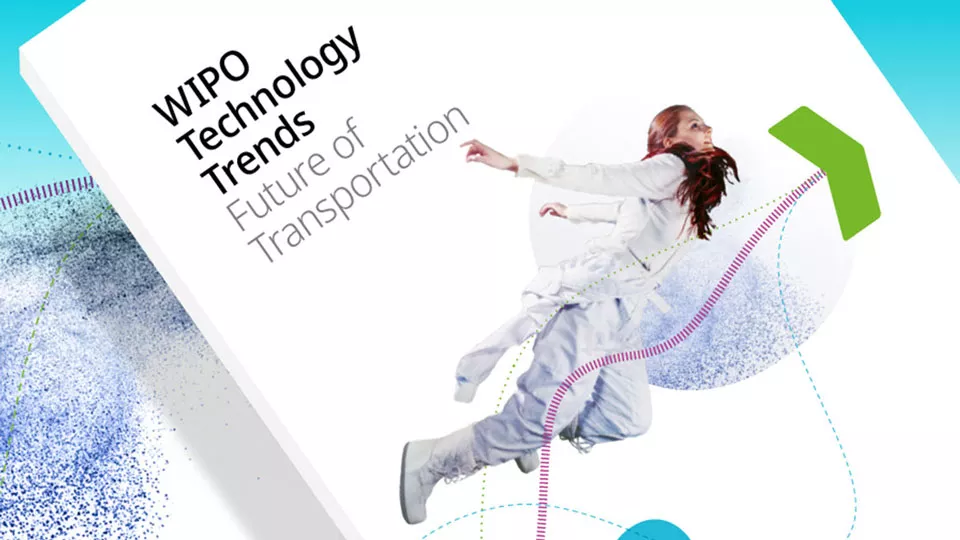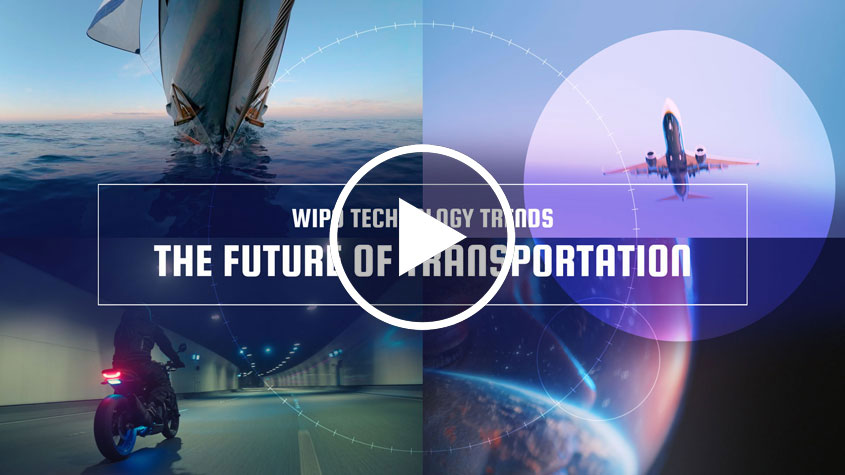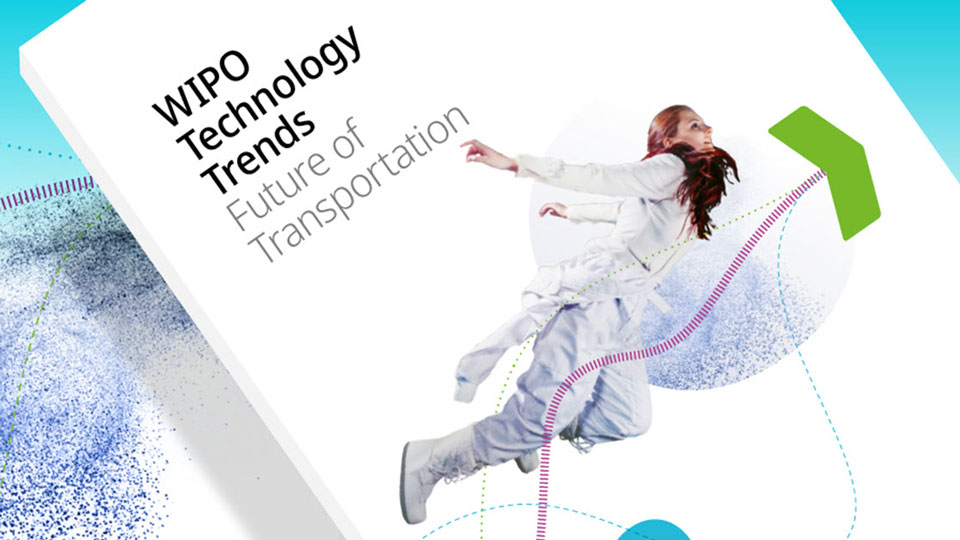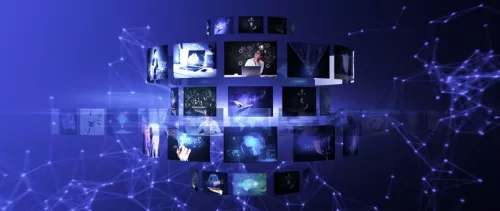
Innovation in the global transportation sector is increasingly focusing on greener, futuristic technologies like air taxis, wireless charging for electric vehicles and self-piloting cargo ships, with China, Japan, the US, the Republic of Korea and Germany leading in inventive activity, a new WIPO report shows.
The report also shows flatlining growth in patenting activity for legacy products like the internal combustion engine and other fossil fuel-based systems.
The “WIPO Technology Trends: Future of Transportation” report identified more than 1.1 million inventions contained in published patents since 2000 that relate to the future of transportation – or technologies linked to sustainability and digitalization megatrends, such as green fuels and smart, interconnected transport systems.
The compound annual growth rate through 2023 was 11%, more than double that in growth for all published patents around the world - underscoring the importance of the transportation sector that accounts for 6-12% of GDP in many countries and about 23% of total energy-related carbon emissions each year.
The largest area of growth in patenting is related to sustainable propulsion – like batteries for electric vehicles or hydrogen fuel cells – part of the effort to ensure that people and goods are moved around in a cleaner, more climate-friendly fashion.

The report aims to equip policymakers, businesses, researchers and others with key insights to guide investments, shape innovation strategies and inspire collaboration. It probes how to better foster commercialization of inventions contained in patent applications, so that they can reach markets around the world and create impact that improves lives.
This report serves as a bridge between cutting-edge research and practical application. As nations worldwide strive to achieve net-zero emissions and build new forms of connectivity, the future of transportation will profoundly impact us all. At this pivotal juncture, we need bold thinking as well as collaborative action to shape policies, standards and regulations that promote commercialization of these great inventions poised to transform the transportation industry.

Technology Trends – Future of Transportation
About the Report:
This third publication in the series WIPO Technology Trends report sheds light on the exciting possibilities that lie ahead in the transportation sector – from electric and autonomous vehicles to smart infrastructure and digital logistics. By investigating the latest transportation patenting trends, it identifies the most innovative countries, companies and institutions.
The report was developed using a data-driven approach, combining traditional patent searches with AI-powered topic extraction. Patents, scientific literature, press releases and CEO statements were analyzed to gather insights into the latest developments and trends within the transportation sector. The report is structured around four principal transportation modalities – land, sea, air, and space – and two overarching megatrends – sustainability and digitalization. Among the key findings:
- Future of transportation patents have grown 700% over the past 20 years from 15,000 inventions in 2003 to 120,000 in 2023.
- In 2003, Future of Transportation patents only accounted for 16% of all transportation patents, now it’s 40%.
- Since 2018, global patenting growth for legacy technologies has flatlined as innovators shift toward newer, greener products and processes.
- Land transport patents dominate, with over 3.5 times the number of inventions from the Sea, Air and Space transport modalities combined.
- Land transport is by far the largest modality in the field of transportation. Since 2000, there have been more than 906,000 inventions in the field of land transport (82% of all identified Future of Transportation inventions).
- Air transport constitutes the second largest mode of transport in terms of patenting activity, with approximately 132,000 inventions since 2000. Patenting activity in space and sea transport technologies is considerably lower, with approximately 75,000 and 47,000 patent family publications, respectively.
- The greatest concentration of inventive activity is found in China, Japan, the US, the Republic of Korea and Germany, which accounted for some 90% of all patents related to the future of transportation.
- Collectively, these five countries have generated almost 1,050,000 inventions in future transport technologies since 2000.
Growth in China is strong given its recent dominance of the electric vehicle (EV) market, but recent growth has also been strong in other countries with lower levels of absolute patenting, including Sweden, Italy, India and Canada.
Related Links
About WIPO
The World Intellectual Property Organization (WIPO) is the United Nations agency that serves the world’s innovators and creators, ensuring that their ideas travel safely to the market and improve lives everywhere.
We do so by providing services that enable creators, innovators and entrepreneurs to protect and promote their intellectual property (IP) across borders and acting as a forum for addressing cutting-edge IP issues. Our IP data and information guide decisionmakers the world over. And our impact-driven projects and technical assistance ensure IP benefits everyone, everywhere.
For more information, please contact the News and Media Division at WIPO:
- Tel: (+41 22) 338 81 61 / 338 72 24

